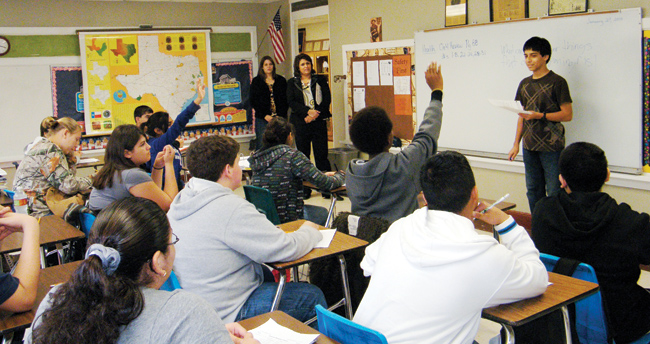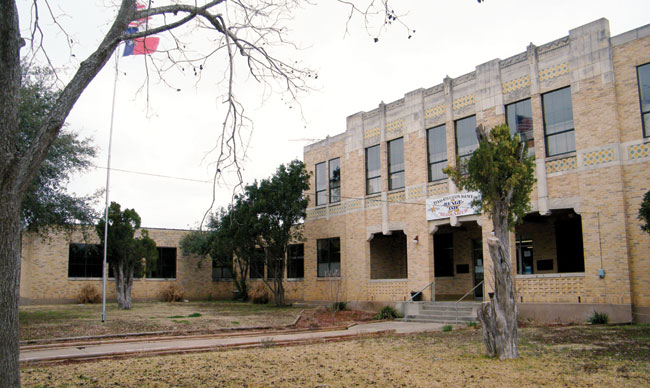Amid all the recent scrutiny of the achievement gap and its effect on urban minority and low-income students, another large subset of disadvantaged American students—those attending poor rural schools—have been largely overlooked and underexamined. More than one in five children in the U.S. live in rural areas, and of these, 20 percent are black or Hispanic.
In a 2003 report, “Closing the Achievement Gap: Rural Schools,” Doris Terry Williams writes that while rural students performed as well as or better on standardized tests than their nonrural peers, white rural students consistently outperformed students of color in measures of achievement. Lower achievement, Williams reported, was most pronounced in rural areas like the Deep South and Southwest and on American Indian reservations where there are large concentrations of people of color. A litany of social issues, many of the same factors affecting urban schools, contribute to this inequity.

The achievement gap in these areas is not a function of being remote or rural, but a function of poverty, explains Rachel Tompkins of West Virginia, the founding president and senior fellow of the Rural School and Community Trust. “There are some beautiful rural places in America where kids are doing just fine and achievement scores are very high. In Wisconsin, Minnesota and Iowa, rural kids are doing quite well,” she says. “But if you go to the poorest regions in the South, you find they’re spending half as much on instruction, per pupil, as New York, Connecticut, Washington state or Wisconsin. The inadequacy and inequity of school financing systems, particularly for the poorest rural districts, is a problem.”
The inadequacy and inequity of school financing systems, particularly for the poorest rural districts, is a problem.
Craig Anne Heflinger, professor of human and organizational development, has studied mental health issues confronting “the poorest of the poor” children in rural areas. She has found that two-thirds of people with symptoms of clinical mental illness living in rural counties receive no care at all. In addition, poor children with severe emotional problems and behavioral problems are significantly more likely to also have physical health problems than other poor children without these problems. “So, we’ve got a group of kids with multiple challenges,” Heflinger says. “And there are huge disparities in access. We have lots of ‘invisible’ kids who live way out in the country, who aren’t getting folded into the health care system.” Instead, her research indicates, if rural children and adolescents receive services for mental health and substance abuse problems, they most often do so through the schools.
One way that states have tried to address education equity issues for rural children is to shut down underresourced local schools and instead send them to large consolidated schools, with the intent of raising the tax base and distributing low-income rural children across a school district. Tompkins believes that consolidation has been a disaster for many rural minority students in the Southeast and West, and has led to a disproportionately high dropout rate among students who are bused long distances to large, impersonal suburban schools.
“We think that if we put poor kids in a shiny school by the side of the road they’ll do better,” Tompkins says. However, many of these children feel increasingly lost and disenfranchised, and they quit school altogether.
Particularly for students who are emotionally fragile to begin with, being on a school bus for more than an hour each day is not a good way to help them achieve in school, Heflinger says. “For children who have impulse problems and behavioral difficulties, it just widens the opportunities for them to be in an unsupervised setting where they can get into trouble,” she says. “And if you kick kids off the bus, their parents certainly can’t drive them 60 miles to and from school.”
One advantage of small rural schools, says Tompkins, is that everybody knows everybody, and it’s much harder for students to become disconnected and fall through the cracks. Also, in many of these low-income areas, the school acts as the heart and soul of the community, the hub of social and educational activities.
Small can work
That is certainly the case with Runge Independent School, a designated Title I school serving 300 students in rural south Texas. The school is divided into an elementary school made up of pre-K through sixth grade, and a high school comprising grades seven through 12. Eighty percent of the student body is minority and most qualify for free/reduced price lunch. Located about 70 miles south of San Antonio, the town has a population of about 1,050 residents, with a median family income (and the families tend to be large) of just under $30,000 a year. It is 45 miles to the nearest town of more than 50,000, and almost that same distance in the opposite direction to the nearest movie theater. Runge has a public library, a few gas stations and a convenience store, but no grocery store. Most people work in agriculture or construction, as laborers in the oil fields or on ranches, for the regional prison system, or for local businesses like WalMart in the neighboring town of Kenedy (pop. 3,300). Seventy-five percent of the townspeople are Hispanic, and only 6 percent have a college education or above. Many families live in government housing projects. Largely because of shortages in adequate housing, of the 30 teachers at the school, only five live in Runge, which creates a major hurdle for recruiting highly qualified teachers to the area.
One advantage of small rural schools, is that everybody knows everybody, and it’s much harder for students to become disconnected and fall through the cracks.
Still, the citizens love their community and they are proud of their school. Nearly everybody in town attends the high school football and basketball games. Each spring, hundreds of people pile into the Veterans of Foreign Wars Hall to see the 16 or 18 high school seniors graduate. Runge High School Principal Jo Ann Villareal says that because Runge is such a small school, 90 percent of its students are involved in multiple extracurricular activities. Those include sports, band, cheerleading, academic competitions and Future Farmers of America.
“Our school is really the focal point for all of Runge,” Villareal says. “There are not enough businesses or community organizations to create community involvement.”
Thanks to the benchmarks set by state assessments and funding received through Title I designation and the federal stimulus package, Villareal and her teaching faculty have redoubled their efforts to raise the academic performance of students at Runge High School, primarily by increasing the rigor of the curriculum. Runge now offers its students a chance to participate in Advancement Via Individual Determination (AVID), a rigorous college-readiness program for eighth and ninth graders that focuses on student-directed learning and critical thinking. Out of 52 students in those two grades, 28 have joined AVID.
Without the personnel or resources to offer Advanced Placement classes, the high school allows interested students to take online distance-learning classes and/or dual-credit courses at the community college 45 miles away. Out of 35 juniors and seniors in 2009-2010, 14 took distance-learning courses in English and history.
“These kinds of options open up doors for our students,” says Villareal. “The courses are expensive and beyond the means of many of our families, but the district pays the tuition, fees and books through state high-school allotment funds.”
Using stimulus funds, she was also able to purchase Acer laptop computers for every student in seventh through 12th grades to keep throughout their high school careers. These computers have been a tremendous boon to instruction, allowing teachers to incorporate website and database searches into their assignments. Unfortunately, few places in town have Internet access. The school now stays open until 9 p.m., so students can work in the computer lab and use the school’s printers. “It’s not like we have a Starbucks around here,” Villareal says. “Half or more of our students wouldn’t have Internet access otherwise.”

“Our school is really the focal point for all of Runge,” Villareal says. “There are not enough businesses or community organizations to create community involvement.”
This focused effort on academics has yielded good results. In the past two years, more students completed high school, including those who became pregnant while still in school. Plus, Texas has deemed Runge Elementary School as “exemplary,” and the high school as “recognized” for their students’ performance on the state standardized assessments. “Recognized” status indicates that 80 percent of students are above the passing benchmark in each of the subject areas tested. Runge was also awarded a “Bronze Medal” in the U.S. News & World Report listing of “America’s Best High Schools 2010.” The bronze designation means that the school’s least advantaged students were performing better than average compared to similar students in the state, although they could not demonstrate a high level of college readiness, because students did not have access to Advanced Placement courses.
Which points to Villareal’s next looming hurdle. Even though her students have been performing well on the state tests, this only indicates they’ve reached minimum proficiency in academic subject areas. Most Runge students are not scoring high enough on the ACT and SAT to be accepted into or receive scholarship money for college. Only two students out of 18 who graduated in 2009 went on to a four-year college. The school is now holding ACT-prep courses to help prepare juniors to take the exam. Teachers have also begun arranging more college visits and other trips to expose them to the world outside of their community. They are also encouraging them to go on college visits on their own.
“Right now, we are reaching the minimum standards,” Villareal says, “but we really want to go beyond that so our students are not only prepared to be accepted into four-year colleges, but also will do well once they get into college.”
To meet that goal will require more than intensified efforts by Runge’s handful of teachers. In the truest sense of the word, it will take a village.